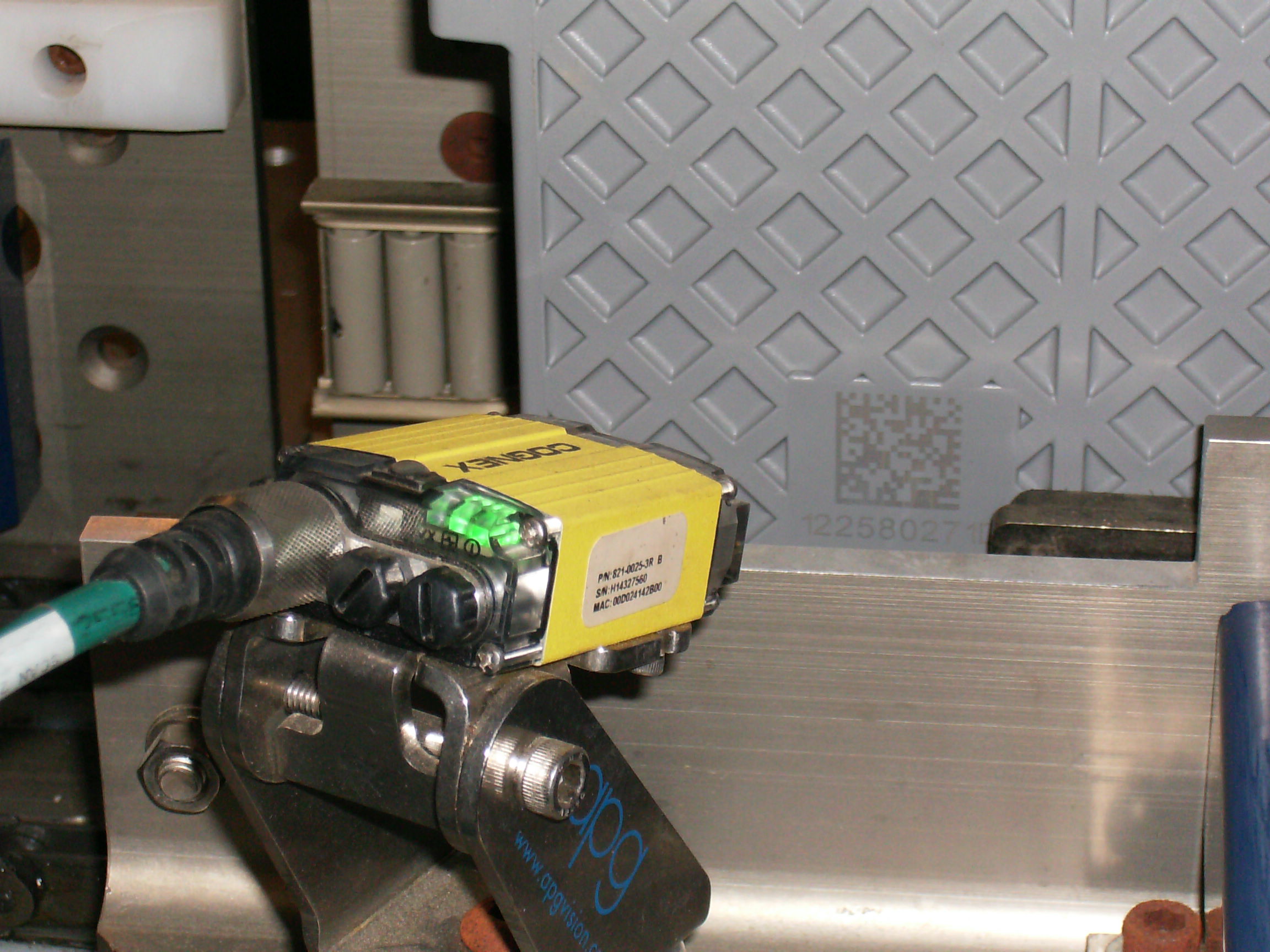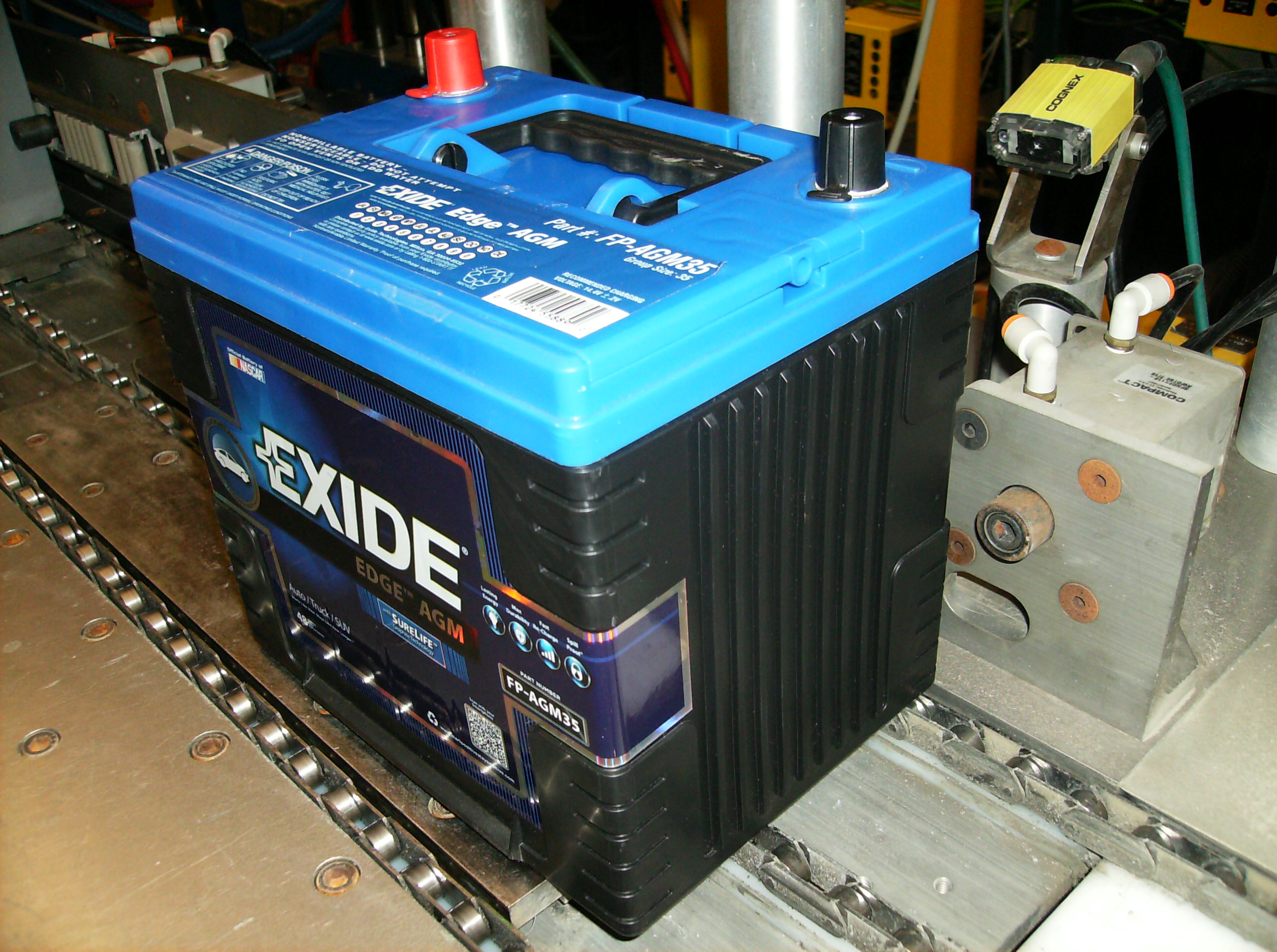Exide Technologies is one of the world’s largest producers, distributors and recyclers of lead-acid batteries. The company traces every aspect of each build in order to maintain tight control over its production process. In the past, difficulties were experienced in reading 2D data matrix codes burned into plastic with a laser burner and also interfacing the ID readers to the programmable logic controllers (PLCs) used to control production lines. The problem was solved by switching to image-based Cognex DataMan 200 readers with 2D decoding software that handles a wide range of degradations to the appearance of code. These readers also easily interface with popular programmable logic controllers.
“The new ID readers have nearly eliminated failure to read the code, improving traceability and throughput of our production lines,” said Richard Riggs, Electrical Engineer with Exide Technologies.
Exide Technologies provides stored electrical energy products and services for industrial and transportation applications including original-equipment and aftermarket automotive, heavy-duty truck, agricultural and marine applications, and new technologies for hybrid vehicles and automotive applications. Industrial markets include network power applications such as telecommunications systems, electric utilities, railroads, photovoltaic (solar-power related) and uninterruptible power supply (UPS) and motive-power applications including lift trucks, mining and other commercial vehicles.
Code Reading Challenges
Production of automotive batteries is carried out on three different machines. The first attaches the lead plates and straps and other components to the battery. The next machine fills the batteries with acid. Finally, the discharge machine tests the battery after charging. A laser marker on the assembly line burns the 2D code containing the serial number of the battery and the part number into the plastic battery case. The 2D code is read immediately at the marking station to ensure its readability and a number of other times during the production process so that in-process measurements can be associated with the battery serial number.
The greatest challenge of this application is that the code and the background are different shades of grey and that there is often very little contrast between the code and the background. “The color of the plastic can vary in different production batches,” Riggs said. “Sometimes flow lines appear in the plastic which creates further variations. I have seen cases where it is difficult to even see the barcode with my eyes. So it’s not surprising that the ID readers that we originally used provided low read rates.”
When the ID reader failed to read the code then the operators had to stop the machine and log the machine readable text under the barcode into the system manually. This manual entry process had to be repeated several times during the production process. The result was a significant reduction in throughput and concern about data entry errors.
Another concern with the original ID readers was the difficulty involved in interfacing them with the Allen Bradley ControlLogix PLCs used to operate the machines. Considerable difficulties were experienced in programming the PLCs to communicate with the previous ID readers. The programming task required considerable knowledge of the proprietary interface of the ID readers and time-consuming manual coding. Changes to the production process often required changes to the PLC code that communicated with the ID readers.

Move to New Reader Technology
“A local vision supplier, Advanced Control Systems (ACS) of Marietta, suggested that we consider a different code reading technology,” Riggs said. ACS sales engineer Jade Paul suggested the Cognex ID readers which use advanced geometric pattern matching technology to locate 2D codes regardless of variation in part contrast, changes in lighting, image focus, degraded appearance, multiple parts and partially hidden parts.
“I looked at several different Cognex products and selected the DataMan 200 because I like the liquid lens technology that makes it possible to focus the reader without having to physically turn the lens,” Riggs said. “I can call up the ID reader from my computer in my office and adjust the focus in seconds. This feature saves having to make many trips out to the factory floor.”
Liquid lens technology adjusts the camera’s focus by applying an electrical charge to fluid within the lens. Autofocus is achieved with a single software command. The lens also provides depth of field and field of view range. Because it has no moving parts to malfunction or break down with use, the system is extremely rugged and resistant to shock, vibration and wear. Setup is simplified with the use of two laser aimers that are seen through the entire depth of field, enabling operators to position the code within the reader’s field of view.

Substantial Read Rate Improvements
“We tried out a DataMan 200 on a range of different production builds and it did a great job,” Riggs said. “We even tried it with some batteries that we had selected where the contrast was so low that it was difficult to see the barcode. I was amazed that the DataMan 200 was able to read the code in every single case.”
The DataMan 200 also proved to be relatively easy to interface with the PLC used to control the line. The ID reader contains an Ethernet interface that was connected to the plant network, enabling it to communicate with all other devices on the network. The DataMan 200 also was provided with drivers, templates and sample code for the open standard industrial EtherNet/IP protocol supported by the ControlLogix PLC.
Operation of ID Readers and Production Machine
The program works as follows. After a new battery is transferred into each code reading station, the PLC instructs the reader to capture and read the image. Nearly ever time the code reader reads the code on the first try. If the reader is unable to read the code, the PLC sends a teach signal and the code reader automatically adjusts the lighting and focus to optimize the image. The reader then performs 10 more read attempts. In the rare occasions when it is necessary, this entire process can be accomplished within the 25 second cycle time of the machine.

The assembly machine operates as follows. In the first part of the machine the lead plates and straps are attached to the battery. The Miyachi laser marking machine marks the case of the battery and an ID reader in the next station reads the code to make sure it has been properly marked. The machine then attaches the cover to the battery and welds the cell partitions and the internal and external posts. Then another ID reader reads the code just before the battery goes into the leak testing station so that the leak test results can be recorded against the serial number.
An ID reader is located at the beginning of the acid filler machine. The battery is weighed in the next station and the weight is recorded with the serial number. Next the battery is filled with acid. The code is read again and again the battery is weighed and the weight associated with the serial number. The PLC program subtracts the first weight from the second weight to determine the amount of acid that has been added to the battery and this number is also associated with the serial number.
The battery is charged, which takes several days, and then tested on the discharge machine. The first station weighs the battery. An ID reader then reads the code and sends the serial number and weight to an SQL Server that compares the weight to the weight that was measured on the filling machine to see how much acid was lost during the charging process and to make sure the battery still has sufficient acid. The last station on the machine performs current and voltage testing. If the battery fails any of these tests it is rejected and sent for repairs.
“The switch to the new ID reader has helped us make a significant improvement in our battery manufacturing operations,” Riggs concluded. “The Cognex DataMan 200 provides virtually 99.8 percent read rates, making it possible for production to continue without interruption for manual data entry and saving time on the part of the engineering and manufacturing team. I am amazed the Cognex reader can usually read the code even when I can’t see with my own eyes. We recently purchased Cognex DataMan 300 ID readers with an even more advanced 2-D Data Matrix code reading algorithm for a new acid filler line and we plan to evaluate its capabilities as well.”
For more information, please visit www.cognex.com.







